Reroofing vs. Roof Replacement: What is the Best Option for Your Home?
Every component of a home holds its own importance, but some stand out more than others. Take the roof, for instance – without it, the entire home could face deterioration. This is precisely why homeowners place great emphasis on the discussion surrounding reroofing versus roof replacement. The unsettling prospect of moisture infiltrating the home and causing chaos is a concern that inevitably crosses the minds of homeowners, particularly those with aging roofs or those recently impacted by a destructive storm.
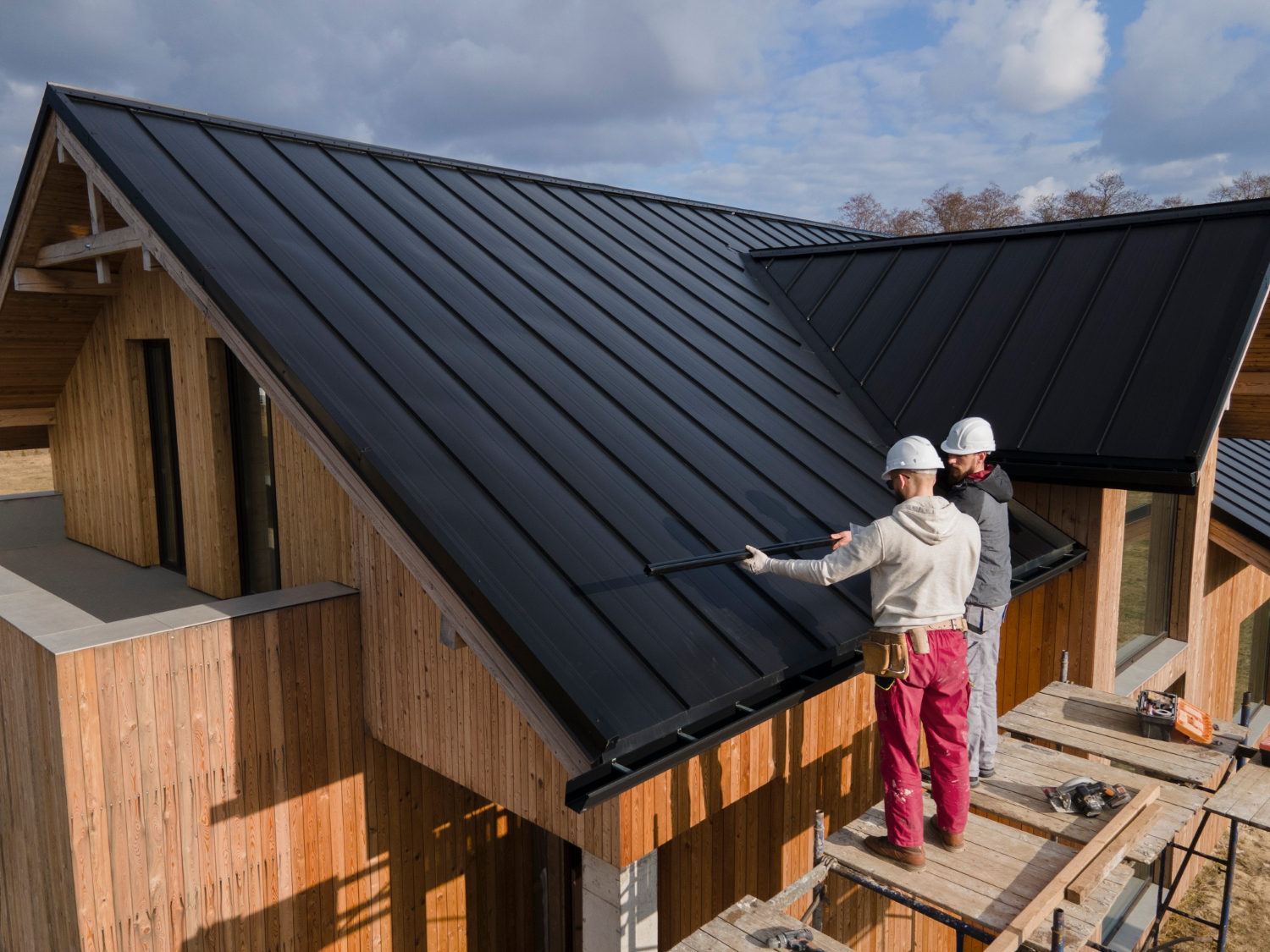
Luckily, you’ve landed on the right platform where all the necessary information is laid out to assist you in making an informed decision about whether to opt for reroofing or roof replacement. Armed with a plethora of insights, you can assess the situation and confidently choose the direction that best suits your needs.
Why Understanding Various Roofing Options Matters
Making an informed decision when it comes to a purchase is a goal every consumer aims for. However, when it involves a significant expense, having essential information becomes crucial rather than merely preferred. One of the crucial decisions in this regard is the selection of a roofing contractor—one who will not only assess the condition of your roof but also provide you with insights into different roofing options, including reroofing and roof replacement.
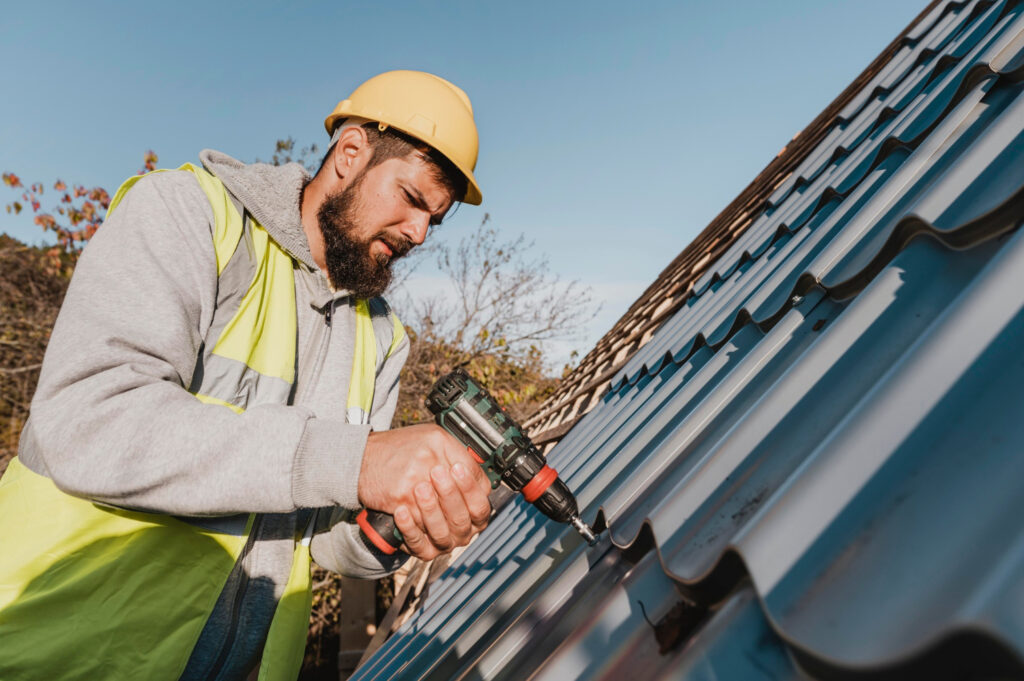
Let’s start by clarifying the difference between reroofing and roof replacement, as they might initially seem to carry the same meaning. In reality, they are distinct processes. One involves the removal of all components and the installation of entirely new materials, while the other is focused on addressing aging or damaged shingles. The disparity in cost and the extent of work required for each method underscores the importance of understanding this distinction.
What is Reroofing?
Feel free to pose the question to your contractor: “What does reroofing mean?” They’ve heard it many times and understand the significance of their response. Reroofing involves the process of installing new shingles on top of existing ones.
Contractors typically recommend reroofing when your current shingles have reached the end of their lifespan, but the underlying structure is still in excellent condition. This includes the crucial foundation of ¾-inch plywood (often referred to as decking), which remains intact and capable of safeguarding your home for many more years. Additionally, the felt paper and moisture barrier should be in good shape, and there should be no significant damage that requires attention before the new shingles are applied.
To simplify, when contractors answer the question “What is reroofing?” they often emphasize that it involves “less work and is less costly than a roof replacement.”
What is a Roof Replacement?
Another inquiry worth raising with your roofing contractor is, “What is a roof replacement?” This question, too, is commonly posed and holds significance. A roof replacement entails the removal of old roofing components, including shingles and all the material beneath it, except for the decking. Subsequently, each of these components is replaced with entirely new materials.
The components of a roof comprises the outermost layer, which consists of shingles, and the felt paper, also known as underlayment. Depending on the type of roof, additional components may include an ice and water shield—a waterproof membrane that safeguards roof valleys—and a drip edge, a metal flashing providing extra protection around the roof’s edges. It’s important to note that a roof replacement is a more extensive and costly undertaking compared to reroofing.
What is the Difference Between Reroof and a New Roof?
Now that you’ve received the contractors’ definitions for reroofing and roof replacement, let’s clarify the distinction between reroofing and a new roof. While they may sound alike, they are, in fact, different. The key difference lies in the fact that a new roof is essentially synonymous with a roof replacement. In a new roof project, not only are new shingles installed, but all the underlying roofing components beneath the shingles are also replaced with new materials.
A new roof project involves a more extensive undertaking compared to reroofing. With a new roof, all the components are professionally stripped off the roof, and new materials are installed. In contrast, during a reroofing project, new shingles are simply placed on top of the existing ones. For a new roofing project, the contractor brings in a dumpster, removes all the old components, clears the decking of old nails and other materials, and then proceeds to the installation phase.
The installation of a new roof requires more labor, as the contractor’s crew is involved in removing the old materials and disposing of them in a dumpster. This process can be quite messy, necessitating a thorough cleanup. However, the benefit of a new roof installation is that it ensures longevity, offering many years of durability, potentially eliminating the need for such a project for an extended period.
A Comprehensive Overview of Reroofing
If you’re seeking a swift method to enhance your roof’s aesthetics and secure years of leak protection, consider reroofing. This process involves installing new shingles over the existing ones, providing a rapid rejuvenation without incurring the full cost of a brand-new roof.
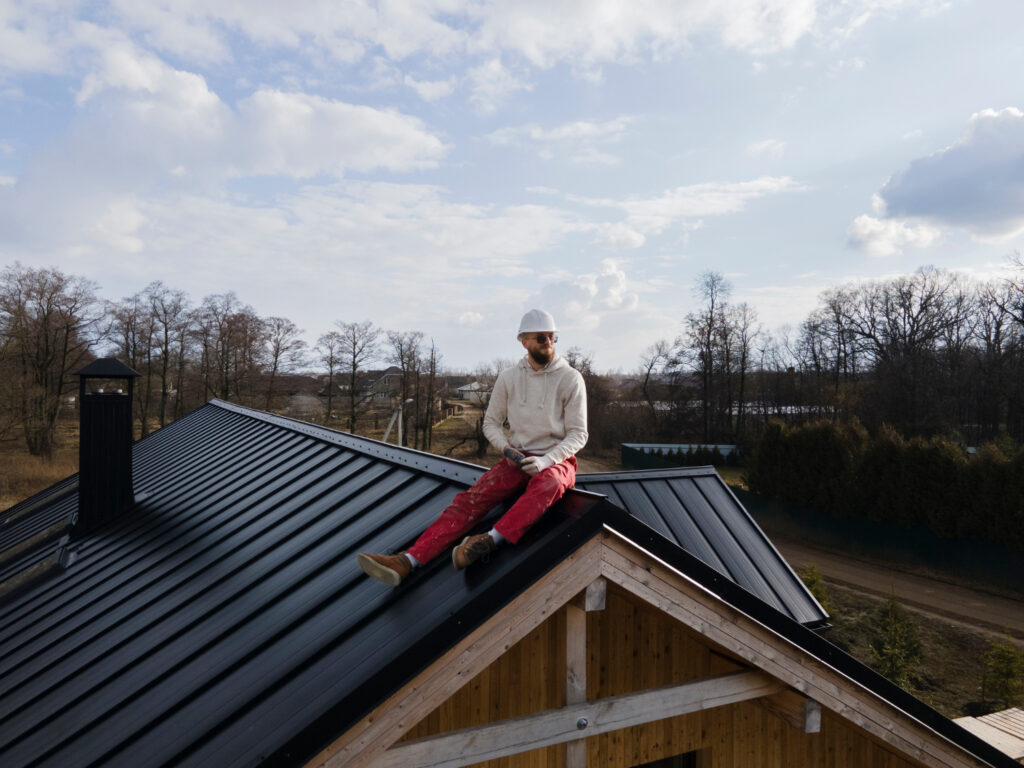
The process typically kicks off with a thorough examination of your entire roof, during which the contractor ensures that everything beneath your existing shingles is still in good condition. At this stage, they may recommend new shingles, provided you currently have only one layer of shingles on your roof. If there’s more than one layer, the shingles must be removed, necessitating essentially a complete roof replacement.
The final step involves selecting the type of shingles you desire to place over the existing ones. A seasoned roofing contractor, drawing from years of experience, can guide you in choosing between cost-effective three-tab shingles or more robust and pricier architectural or premium shingles.
While reroofing is a more budget-friendly alternative to roof replacement, it is also a less time-consuming process. With fewer tasks at hand, the project can be completed in a shorter timeframe. Collaborating with the right contractor for reroofing services ensures that you receive an estimated timeline and cost breakdown for the project.
There are various advantages and disadvantages associated with reroofing, including:
The benefits of reroofing a house
There are clear advantages to reroofing a house, with reduced cost being a notable one. Additionally, undertaking a project like this provides added protection to your home. Explore the following pros of reroofing for your home:
Improves home aesthetics
Shingles serve as the outermost layer of your roof, making them the only visible component. Installing brand new shingles significantly enhances the home’s curb appeal, providing an attractive and fresh appearance.
Reinforces your roof
The addition of new shingles imparts an extra layer of protection for years ahead, given that these new shingles come with fresh protective granules that enhance their defensive capabilities. Moreover, incorporating a second layer of shingles further contributes to the prevention of leaks.
Cost-effective choice
It’s always welcome news when the contractor indicates that your roof is well-suited for reroofing instead of a complete replacement. Reroofing is an ideal option for those on a tight budget, and it also requires less time compared to a full roof replacement. The savings from this choice may even provide some flexibility in your budget for upgrading to more premium shingles. In general, the cost of a reroofing project is typically around half that of a roof replacement.
Quick and straightforward process
If you’re aiming for a project to be completed swiftly, reroofing is the preferred option. This is because there is no removal of materials and less installation involved, resulting in reduced labour and time requirements.
The drawbacks of reroofing
Every list of advantages is accompanied by a list of disadvantages, and reroofing a house is no exception. While there will be downsides for some, it doesn’t necessarily mean it’s the wrong decision. Explore some of the cons and consider if they impact your decision.
Short-term roofing solution
Contractors will openly communicate that reroofing does not have the same longevity as a full roof replacement. In reality, it’s viewed as a temporary solution, with many considering it a form of “patchwork” over an older roof that may conceal potential future issues.
Restriction on two layers
Shingles possess considerable weight, and roofs are not designed to support more than two layers. Regulations are in place to prohibit exceeding this two-layer limit, a prudent measure to safeguard homeowners from the risk of potential collapse.
Limited to asphalt shingles
A reroofing project provides little flexibility in material choice, as an additional layer can only be added using asphalt shingles on top of existing asphalt shingles. Contractors typically avoid attempting this with wood, slate, clay, or metal roofing materials, as it is not considered practical.
Concealed roof damages
Even highly skilled contractors may overlook minor damages that could escalate into more significant issues over time. A reroofing project has the potential to conceal these areas that might otherwise become visible later on. The concern is that decking problems, considered significant damage, could be overlooked, leading to probable interior damage in the near future.
Limited roof lifespan
Typically, new roofs provide homeowners with 20 to 30 years of protection, and sometimes even longer. In contrast, most reroofing projects are expected to have a lifespan of no more than 15 years.
Restricted ability to inspect a damaged roof
You need to be an experienced and seasoned roof inspector to identify potential damages under a reroofed home. Without the advantage of removing all the shingles and exposing the decking, it’s challenging to determine if the decking requires repair or replacement.
Voided manufacturer warranties
Manufacturers provide warranties for new construction, as they understand their products will endure for a specific number of years under suitable conditions. However, these conditions are not typically present in a reroofing project, which is why manufacturers void their warranties.
Reduced house resale value
Potential homebuyers tend to steer clear of homes that have undergone reroofing. To enhance the market appeal of a reroofed home, sellers often find it necessary to offer discounts on the home’s price.
Doubling the weight on the support structures under the roof, due to the presence of two layers of shingles, is a concern. Additionally, double-layered roofs tend to trap heat and warm up more than roofs with a single layer of shingles, negatively impacting the lifespan of the shingles.
Reroofing Costs
Homeowners with budget constraints are hopeful that their roofing contractor will deliver the welcome news that they are eligible for reroofing instead of a complete roof replacement. Reroofing is notably more budget-friendly, and its ability to be completed in about a day adds to its appeal for homeowners.
Several factors contribute to the overall cost of a reroofing project, including the type of shingles selected, the size of the roof, and the steepness of the roof’s slope. As a general guideline, anticipate an estimated cost starting at around $7,000 for reroofing. If your house is relatively small and straightforward to work on, the cost may be lower. Conversely, for larger homes or roofs with complexities that make shingle installation challenging, the cost may exceed $7,000. Your roofing contractor should provide a more accurate estimate after conducting a thorough inspection of your roof.
When to Contemplate Reroofing Services
Now that you have information about reroofing services, their associated costs, and the pros and cons involved, it’s time to evaluate whether reroofing is a suitable option for your home. To summarize, here are the top three factors you need to contemplate before making a decision:
End of Roof Lifespan
If your shingles have reached the end of their lifespan, but the other components of your roofing system are in good condition, you are a suitable candidate for reroofing.
Minor Leaks
Reroofing can resolve minor leaks, as your old shingles may be allowing some moisture through, and the new ones will “seal” the compromised areas.
Partial Roof Concerns
One of the most cost-effective maintenance tasks you can check off your list is to reroof only the section of your roof that requires attention. If the rest of your roof is in good condition, opting for reroofing is a highly budget-friendly alternative to a full replacement.
Whether you aim to enhance the curb appeal of your home for a potential sale or simply seek a few additional years of protection, reroofing presents a practical option. It’s essential to note, however, that many contractors view this as a temporary solution and may recommend a complete roof replacement in the near future.
A Comprehensive Examination of Roof Replacement
While saving money on a reroofing project is desirable, there are instances when it’s not a viable option, and a more extensive roof replacement becomes necessary. This is especially true when dealing with a sagging support structure, indicating that a comprehensive removal of everything, including some or all of the decking, is required. Major repairs must then be undertaken before the installation of new shingles can commence.

It’s not always as drastic. In certain situations, the necessity for roof replacement arises because there are already two layers of shingles on the roof, and building codes prohibit a third layer. Furthermore, your structure may not support three layers.
Even if you have only one layer of shingles, you might still be a candidate for roof replacement if the layers of roofing material beneath the shingles are in poor condition. In such cases, your roofing contractor will need to remove everything and start anew with fresh materials, including felt paper (underlayment), flashing, and other roofing components.
When the objective for your roofing project is long-term durability spanning decades, a complete roof replacement becomes imperative. This approach also provides your contractor with a comprehensive view of areas on the roof that might otherwise go unnoticed. Stripping everything away offers a clear view of potential trouble areas that can be addressed before installing the new materials.
Your prudent course of action is to discuss your concerns with your roofing contractor, and they will present you with a range of options that will enhance the well-being of your home.
There are various advantages and disadvantages associated with roof replacement, including:
The Advantages of Full Roof Replacement
Opting for a complete roof replacement is the optimal method to maximize the lifespan of your roofing project. Upon completion of the job, you’ll have the assurance that you’ve taken the most effective measures to safeguard your home. Take into account these advantages frequently highlighted by homeowners regarding their roof replacement.
No Layer Restrictions
The number of layers on your roof becomes inconsequential when a replacement is necessary. It’s one less factor to be concerned about.
Fresh Exterior Look
With a roof replacement, there’s no need to fret about curled shingles or uneven appearances, as is often the case with reroofing projects. A roof replacement begins with a clean slate, enabling roofers to achieve the utmost curb appeal.
Extended Roof Lifespan
The most extended lifespan achievable for a roofing project is attained with a completely replaced roof. It’s not unusual for a replaced roof to endure for two or three decades.
Diverse Roofing Material Options
Considering replacing your roof with metal, slate, clay, or wood? This isn’t an issue with a roof replacement, unlike being restricted to asphalt shingles in a reroofing project.
Chance for Roof Inspection
During a roof replacement, all the old materials are removed, and fresh roofing components are installed. This process allows your roofing contractor to thoroughly inspect what’s underneath. Even the smallest issues that might not be problematic now can be addressed before installing new material, ensuring there is no risk of future problems.
Raises Your Home Value
If you’re aiming to enhance curb appeal and resale value, a roof replacement can accomplish both. It serves as an appealing feature for buyers who prefer not to deal with the inconvenience and expense of a roofing project in the near future.
Long-Term Cost-Efficiency
While the upfront cost may be higher, a roof replacement provides value as a long-term solution and a sound investment.
Comparing reroofing to roof replacement is like comparing apples and oranges. They are distinct approaches, but opting for a roof replacement undoubtedly offers long-term value, and the peace of mind it provides is virtually priceless.
The Drawbacks of Roof Replacement
Despite the numerous advantages of opting for a roof replacement, it’s challenging to identify drawbacks. However, for budget-conscious homeowners who carefully monitor their expenses, the primary and apparent concern about roof replacement is the associated cost.
Increased Cost
The expense associated with replacing your roof is nearly double that of a reroofing project. This higher cost is attributed to the additional labor involved, as roofers need to remove the old material and dispose of it before commencing with the installation of new underlayment and progressing to shingles or other specified materials. Premium choices like slate, tile, and wood (cedar) come with higher costs, while the more budget-friendly option of asphalt shingles averages around $14,600 for a complete roof replacement.
Extended Duration
Due to the various steps involved in roof replacement, the project takes a longer time to complete compared to a reroofing project.
Roof Replacement Costs
Determining the cost of roof replacement involves considering various factors. Unlike a reroofing project where the expense is primarily for shingles and the labor to install them, a roof replacement entails labor for tearing off and disposing of the existing roofing system, which may include two layers of shingles in some cases. Additionally, there is labor for installing new shingles and all the underlayment, flashing, and other materials beneath the shingles. Consequently, the cost of a new roof exceeds that of a straightforward reroofing job.
Roofing contractors typically assess the size of a roof in “squares,” where one square equals 100 square feet of surface area. For instance, a 2,000-square-foot roof comprises 20 squares. This is crucial because roofers charge per square, so a higher number of squares results in a greater roof replacement cost. However, area isn’t the sole determining factor. If your roof has a steeper pitch, it becomes more challenging to work on, consuming more time and leading to increased labor fees.
The number of areas requiring repair also contributes to difficulty and costs. For instance, uncovering damaged sections during the removal of materials from the decking may necessitate replacing the decking, adding to both labor and material costs.
Lastly, the presence of additional features on the roof, such as chimneys, vents, skylights, antennae, or any structure requiring flashing, can elevate costs.
When to Opt for Roof Replacement Services
Although many homeowners lean towards the lower costs of reroofing projects, there are instances where reroofing is either unfeasible or impractical. While overlaying old shingles with new ones is a more economical option than a full replacement, it becomes necessary to remove the existing layers if your roof already has two layers. Moreover, if the structure is too aged and damaged, opting for reroofing would merely serve as a temporary solution to the underlying problem.

Roof replacement is the optimal choice when:
- Two layers of shingles are already present
- Your roofing materials are no longer effectively protecting your home
- Flashing or other roofing components are missing or damaged
- Moisture damage is present, indicating existing structural problems
- Discolored interior surfaces reveal that moisture has penetrated through all layers of the roof and into the interior walls
It’s a common choice among homeowners to ensure comprehensive protection by opting for a full replacement, providing the assurance that the roofing system is entirely intact and capable of safeguarding the home for many years. Although the cost is higher, the investment holds significant value.
Reroofing vs. roof replacement
In certain instances, homeowners may not have the liberty to choose; however, there are times when the debate between reroofing and roof replacement becomes significant due to an actual choice being available. A thorough comprehension of the distinctions between the two, along with an assessment of the pros and cons, as well as considerations of time and costs, will assist decision-makers in selecting the option that best suits their home.
The table below illustrates key characteristics of reroofing and roof replacement in a visually accessible format, outlining the differences between the two.
Reroofing
Roof Replacement
Appearance
Lacks clean lines
Symmetrical lines and an overall better appearance
Shingle layers
Only an option if there are less than two layers
Not an issue
Scope
Minor fix and improves aesthetics
Every component of the roof system is improved
Lifespan
Short-term solution (up to 16 years)
Long-term solution (lasting decades)
Cost
Lower cost
Higher cost
Time required
Less than three days
One week
Warranties
All material warranties are void
Comprehensive warranties
Property value
Can hurt resale value
Increases resale value
The Key Contrasts Between Reroofing and Roof Replacement
Upon initial observation, a home that has undergone reroofing may appear improved with the installation of new shingles. However, a closer inspection often exposes what many describe as a “less uniform appearance.” To be more precise, a reroofed home may lack the sharp, clean lines characteristic of a completely replaced roof. While this isn’t always the scenario, there are instances where the old shingles remain visible beneath the new ones.
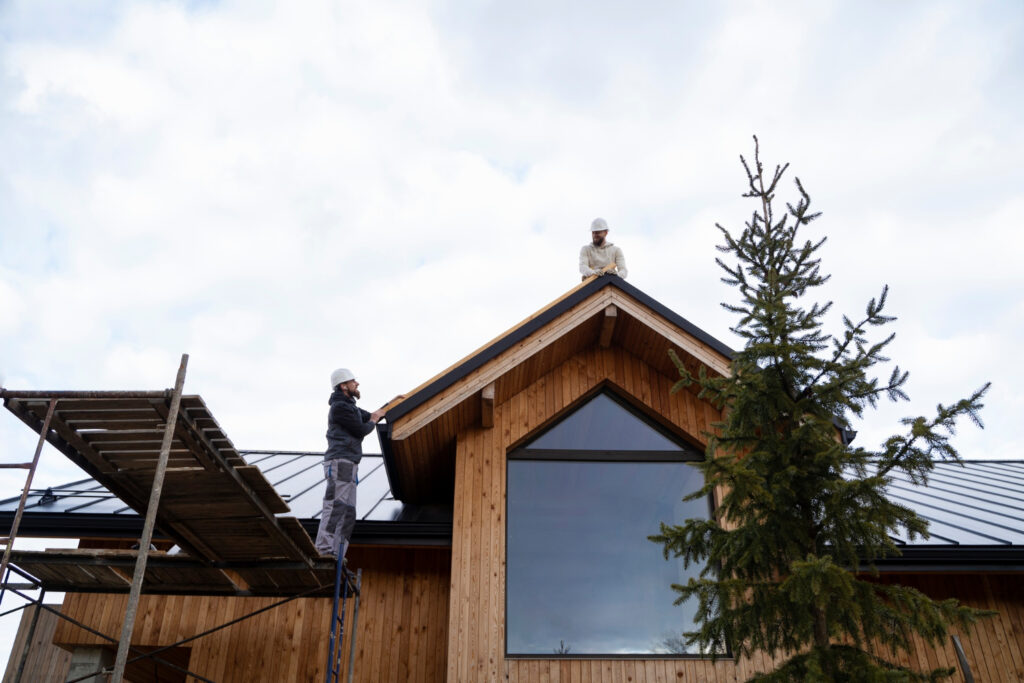
It is typically the existing shingles that contribute to the less-than-perfect aesthetic of a reroofing job, as their lack of uniformity puts the roofer at a disadvantage during the installation of new shingles.
In contrast, a roof that undergoes replacement benefits from a “clean slate,” where the new materials are placed on an even decking surface, ensuring a more uniform appearance. With the removal of old shingles, there is no hindrance to achieving a cleaner and more consistent look, which is considerably more appealing. A side-by-side comparison will clearly reveal the difference in curb appeal.
Beyond aesthetics, the major distinction lies in the scope of the work. While reroofing may temporarily delay potential leaks caused by deteriorating shingles, it is considered a short-term solution. Roof replacement, however, involves a more comprehensive approach, with all materials being replaced—from the vapor barrier to the flashing to the shingles—ensuring peak performance and decades of longevity.
If your preference is for reroofing, but your roof already has two layers, this option may not be available. In contrast, roof replacement disregards the number of layers present, as everything is removed, potentially including some or all of the decking.
In terms of durability, roof replacement has a clear advantage. While reroofing provides some leak protection, it is primarily seen as a cosmetic fix without the goal of being a long-term solution. Roof replacement, on the other hand, offers both cosmetic improvement and the enduring protection provided by a completely new roofing system.
The inevitable question arises: “Is the added durability of a roof replacement worth the cost?” The answer is a resounding “yes.” Despite the higher cost associated with roof replacement due to added materials and labor, the investment pays off. Material warranties remain valid, providing coverage for decades. Additionally, the value lies in the assurance that all new components of the roof system will safeguard the home.
An essential difference between the two is the enhanced resale value with a roof replacement compared to reroofing. A fully replaced roof not only enhances curb appeal but also reassures potential buyers that they won’t face a roofing project in the near or distant future.
Cost of reroofing vs. roof replacement
In the debate between reroofing and roof replacement, cost stands out as a significant factor. The price tag of any roofing project, be it repairs, reroofing, or replacement, is influenced by the home’s size, the materials chosen, and the complexity of the work (steep roof, numerous obstacles). Given the more extensive nature of a roof replacement compared to a reroofing project, it is evident that the former will have a more substantial impact on the budget.
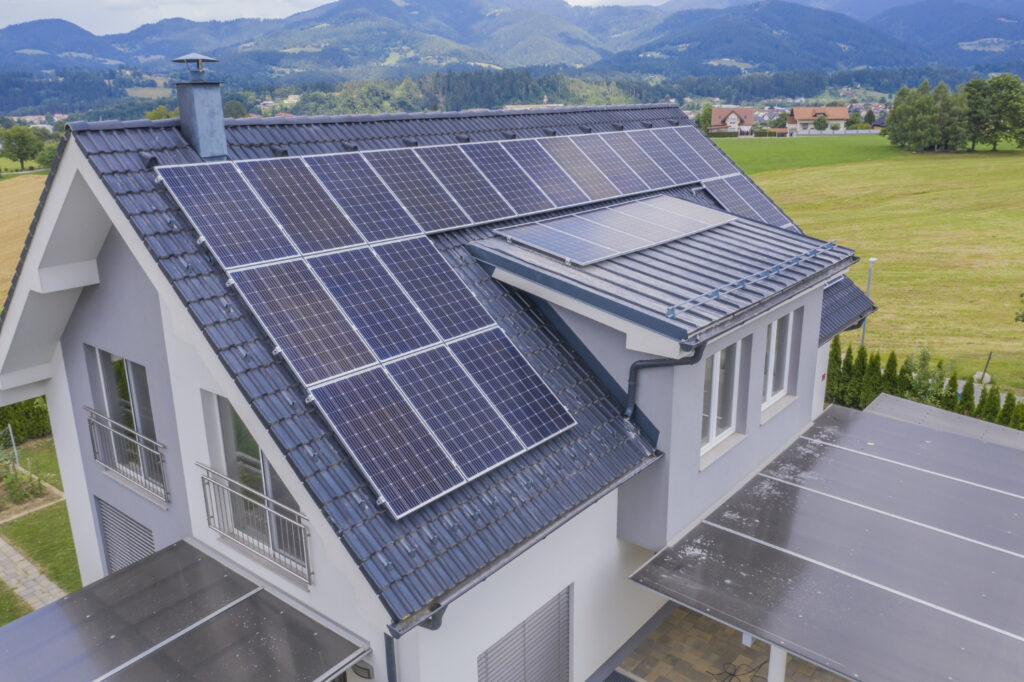
In Canada, roofing costs can vary based on the characteristics of your home. Although the primary function of a roof is consistent across all homes, the slope and height of the roof differ, impacting labour charges. For instance, homes with easily accessible and low-slope roofs incur fewer labour costs, while homes with higher, steeper roofs and additional features like chimneys, skylights, and vents result in higher labour expenses.
Material costs also play a significant role. Reroofing projects are limited to asphalt shingles due to their compatibility with existing roofing materials. Costs for basic shingles range from $5,000 to $12,000 for premium, durable options. On the other hand, roof replacement projects offer flexibility in material choice, including slate, tile, or wood. However, this flexibility comes with additional expenses for underlayment materials. Basic replacement projects start at $14,000, with costs increasing based on chosen materials and labour.
How to decide between reroofing and fully replacing the roof
Making an informed decision provides peace of mind, ensuring that you’ve chosen based on facts for the best possible results. Homeowners in Canada typically weigh numerous factors when deciding between reroofing and roof replacement, taking into account budget constraints, aesthetic preferences, and many other considerations.

Key Considerations:
The condition of your roof
Considering the significance, the condition of your roof is listed first in importance. Evaluating the state of your roofing materials, their current integrity, the remaining lifespan, and whether they are exhibiting signs of failure enables you to make a well-informed decision between reroofing or a complete roof replacement. While opting for reroofing might provide a temporary and primarily cosmetic solution, choosing roof replacement is likely to yield more extensive and enduring benefits.
Thus, reflect on the following: 1) Does my roof require significant repairs to attain a state where it can effectively protect my home? 2) Is the current roofing system in sufficiently good condition, allowing for minor repairs to prevent leaks for a limited number of years?
Considering the weather conditions in your region
When shingles reach the end of their lifespan, they lose their ability to withstand adverse weather conditions. This means that shingles, which once could endure high-velocity hits from hail, may now succumb to pressure, leading to leaks. If you reside in an area prone to heavy snow and ice during the winter, aging shingles might fail, making you a better candidate for roof replacement rather than reroofing. The added weight during heavy snowfall could strain support structures.
Conversely, if you haven’t experienced severe weather conditions and your shingles, though worn, are still functional, your roofing contractor might suggest reroofing. In any case, delving into the weather patterns in your area and potential future conditions will provide more information for making an informed decision.
Roof lifespan and quality
Roofing materials, including mid-budget asphalt shingles, have a finite lifespan, typically lasting between 15 and 20 years. When making a decision between reroofing and roof replacement, it’s essential to consider both the lifespan of the shingles and the condition of the materials beneath them. If your roof has either exceeded or is approaching the end of its lifespan, opting for replacement is recommended.
Choosing replacement becomes crucial when aiming for long-term results and addressing the quality of the roofing system. While reroofing may be suitable for those seeking a short-term solution on a limited budget, it does not provide the same level of high-quality and durable outcomes as a complete roof replacement.
The slope and complexity of your roof
In the realm of architecture, intricate roofing systems hold a certain aesthetic value. However, dealing with such roofs involves specialized tools and additional labor for repairs or replacement. Consequently, a reroofing project, typically seen as a more cost-effective choice, becomes notably expensive due to the challenges posed by installing new shingles. Instead of opting for a costly quick fix as reroofing might offer, a more worthwhile alternative is to opt for a complete replacement.
This scenario applies similarly to roofs with a steep slope, requiring extra safety precautions for roofers and slowing down the shingle installation process, thereby contributing to the overall project’s expense. Once again, choosing a roof replacement over an expensive cosmetic fix with reroofing is a more prudent decision for long-term benefits per dollar spent.
Building codes and regulations for roofing
Violating building codes can result in hefty fines and extensive rework, an undesirable situation for anyone involved. This becomes particularly relevant when a homeowner decides to install a third layer of shingles, contravening the regulations set by most city ordinances, which typically permit only two layers on a home. Reputable roofing contractors understand the importance of adhering to these codes, but ultimately, it is homeowners who bear the financial burden. Therefore, it is crucial to determine the number of existing layers on your roof before opting for the reroofing option.
While your contractor should offer guidance in such matters, it is also advisable to contact the local agency overseeing building ordinances to inquire about the legal requirements in your area.
Budget for roofing project
Financial considerations typically play a crucial role in major decisions, and rightfully so. It’s fiscally responsible to assess your budget, explore borrowing options, and align with repayment plans that fit into your long-term financial outlook. While a reroofing project is often the most cost-effective option, it may not always provide the most value or effectiveness over the long term. However, when budget constraints are the primary determinant, and your contractor suggests reroofing as a viable option, it becomes the most prudent choice.
On the other hand, if the budget allows for a roof replacement, numerous added benefits come into play. These include heightened protection from brand-new materials, aesthetic enhancements, an extended lifespan for the roofing system, and an increase in the home’s resale value – all contributing significantly more value compared to a reroofing endeavor.
Finalize Your Decision: What’s the Optimal Roofing Choice for You?
Home improvement choices are challenging, especially when the projects involve significant investments. Roofing projects, being inherently costly, amplify the gravity of decision-making. Yet, armed with a comprehensive understanding of the advantages and drawbacks, the factors influencing your choice, you now possess valuable insights to make the optimal decision for your home.
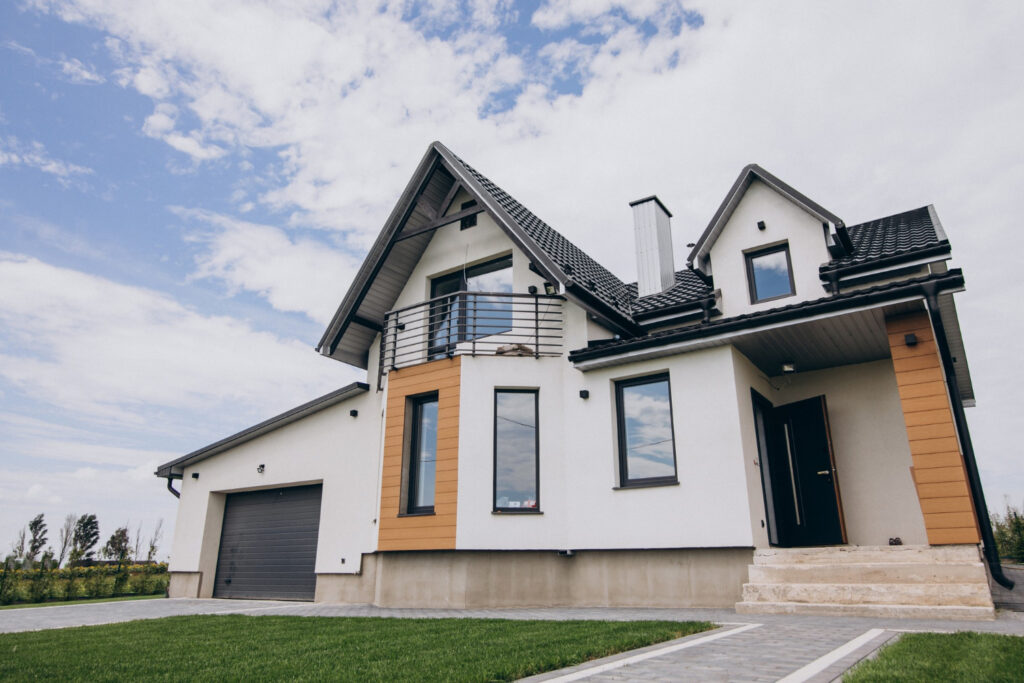
Perhaps you’re a homeowner dealing with aging shingles that, while not causing leaks, have lost their fresh appearance. In such a scenario, reroofing might seem like a suitable choice, especially if your roof currently has only one layer of shingles.
However, if your roof already boasts two layers of shingles, local regulations typically restrict additional layers, necessitating the removal of the old ones for a new roofing system.
Another consideration arises when you have only one layer of shingles but notice signs of failure in both the shingles and underlying layers. In this case, opting for a roof replacement becomes the more prudent decision over the temporary cosmetic fix offered by reroofing.
A reputable roofing contractor conducts a thorough inspection, identifying trouble areas that may not be evident from the ground. For instance, during an inspection prompted by the roof’s age, the contractor may discover water damage and sagging in the attic’s decking, indicating more severe issues requiring a complete roof replacement.
While contemplating the cost of a full roof overhaul might be daunting, the upside lies in the enhanced curb appeal and resale value of your home. Moreover, the investment provides peace of mind, ensuring your roof will safeguard your home for many years to come.
When reroofing isn’t the ideal choice
There’s the decision you wish would suit your situation, and then there’s the decision that logically makes the most sense. While you may hope to avoid the significant cost of a complete roof replacement, the reality is that there are compelling reasons why reroofing may not be the best choice.
Factors making reroofing impractical:
Multiple shingle layers:
If your roof already has two layers of shingles, building codes mandate the removal of both layers before installing new shingles. Safety regulations usually prohibit more than two layers, as the majority of roofs lack the structural strength to support three layers of shingles.
Sagging roof:
Even if a sagging roof is barely noticeable, it’s a clear indication that something is amiss and requires prompt attention. The last thing you want is a structural problem, so the only viable solution is to remove the entire roof system and address the underlying structural issues.
Metal roofing:
If you plan to use asphalt shingles, they can only be installed over existing asphalt shingles, not metal. If you opt for a metal roof, you’ll need to remove your asphalt shingles first.
Venting issues:
Whether it’s due to improper installation or structural issues, when a roof experiences venting issues, moisture damage can occur. Roofs need to “breathe” to properly accommodate the rise and fall of humidity. A roof replacement addresses this issue, while a reroofing project will not.
Architectural shingles:
Architectural shingles are sought after for their thick design, providing extra durability and an appealing aesthetic. However, it’s not recommended to install new shingles over them due to the likelihood of an uneven and unattractive appearance, along with the potential compromise in their ability to protect the home.
Reroofing is generally considered a temporary fix, which is why it’s never recommended for a roof with serious issues that can only be addressed with a complete replacement. Make sure to ask your roofing contractor plenty of questions and inquire about their reasoning for whether a reroofing project is ideal for your home.
A complete roof replacement is a worthwhile investment
Referring to a roof replacement as an investment is not an exaggeration; it aligns with the true meaning of the term. While a new roof may be perceived as a significant cost by many homeowners, ranking high among expenses for home improvement projects, its value far surpasses the monetary aspect.

Opting for reroofing may seem like a cost-effective, short-term solution, but when considering the long-term expenses, the value of a complete roof replacement becomes evident. Reroofed homes will likely need thorough assessments and might even necessitate a full roof replacement in the foreseeable future. Consequently, investing in a roof replacement proves to be a more substantial and lasting decision compared to the money spent on the temporary and primarily cosmetic reroofing project.
While the aesthetic benefits of a brand-new roof contribute to enhanced curb appeal and increased attractiveness to potential buyers, the resale value of a home with a completely renewed roof is also notably elevated.
In essence, a new roof stands as a prudent investment. Beyond the financial considerations, it offers immeasurable value in terms of the protection it provides and the priceless peace of mind, assuring homeowners of secure coverage for a minimum of two decades.
Selecting the optimal roofing professional for a complete roof replacement in DuPage County
Selecting the best roofer for your project should be a top priority as you plan your roofing project. What defines a quality roofing contractor? When undertaking a full roof replacement, it’s crucial to have someone with extensive experience, particularly with your type of house, who can guide you through the entire process.
Conduct thorough research to identify roofing contractors with a solid track record, providing numerous referrals and showcasing their work through examples. Opting for a local contractor is highly beneficial, as they likely have references and homes in close proximity, allowing you to witness the quality of their work firsthand.
For DuPage County residents seeking a trustworthy option, A2Z Roofing is the go-to choice. As a local company with nearly two decades of experience working on various homes, we understand the specific needs of homeowners in the area. Our commitment to excellence is driven by our passion for the work we do. Contact us to schedule a meeting and determine the best direction for your roofing project.
Ready to a Refreshing Home Exteriors?
Our team delivers outstanding quality in roofing & home exterior projects.

